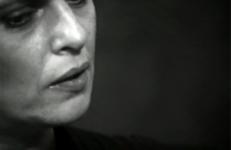
The ninety interviews produced by Lyn Blumenthal and Kate Horsfield between 1974 and 1988 exhibit a level of intimacy and authenticity that is startling when contrasted to today’s media savvy world. These interviews, recorded on early video equipment, evidence an era when those under the spotlight were less conscious of projecting a perfect and mediated “image”, and more interested in sharing ideas, experiences and histories. Within these early tapes, Blumenthal and Horsfield’s interviewees thoughtfully answer questions about their lives and work in ways that are both surprising and enlightening, while detailing the artistic choices they make on a day-to-day basis.
These compelling interviews, often shot in black and white, reveal the development of each artist’s trajectory, from first deciding to become an artist, to developing a practice and establishing a career. Many of the interviews are taped with artists at a fairly early stage in their artistic development; some artists are re-interviewed after a period of several years, accentuating developments in ideas and methodologies. The productions are small in size, often recorded with only the artist, camera operator and interviewer present, allowing for the development of a remarkably intimate atmosphere, and revealing profound insights into the lives and work of the subjects.
Averaging an hour in length, the interviews are edited from the original footage in order to distil the content to the most important and relevant dialogue. The camera focuses close-up on the artist, with the interviewer out-of-frame, though their voices can be heard asking questions and seeking clarifications, and occasional cigarette smoke floats across the screen. This stripped down format ensures that the viewers’ attention is focused on the interviewee, and the dense and often complex descriptions of the creative process that each artist reveals.
The series ended with Lyn Blumenthal’s untimely death in 1988.
Betty Parsons (1900-1982) was an influential art dealer in mid to late 20th century New York. She used her gallery as an influential advocate for the abstract avant-garde, and was renowned for championing new styles and new artists well before they received wider recognition or commercial success. Notable examples of Parson's circle include abstract expressionist giants Barnett Newman, Jackson Pollock, Mark Rothko and Clyfford Still.
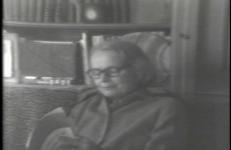
Polish-American arist Ed Paschke (1939-2004) received his BFA from the School of the Art Institute of Chicago in 1961 and his MFA in 1970. Paschke was known as a member of the late-1960s Chicago Imagist movement, a group of artists who called themselves The Hairy Who, whose expressive style of figurative painting was rooted in outsider art, popular culture, and Surrealism. Paschke's fascination with the print media of popular culture led to a portrait-based art of cultural icons. Paschke used the celebrity figure, real or imagined, as a vehicle for explorations of personal and public identity with social and political implications.
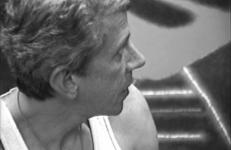
Philip Pearlstein (b.1924) began painting figures in the 1960s and is known as a leading figure in American Realism. Throughout his career, Pearlstein's paintings evolved from an expressionistic style to a meticulously analytical vision. His work attempts to present the model as a documentation of the painting session, and his paintings are closely rendered under the existing studio lighting. Attuned to art history, Pearlstein is as interested in pattern and composition as he is in the body itself.
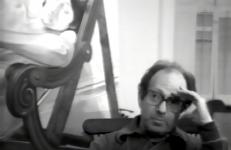
Arlene Raven (1944-2006) was a feminist historian, theoretician, poet, and art historian who has published numerous books on contemporary art and written criticism for The Village Voice and a variety of other newspapers, art magazines, exhibition catalogues, and scholarly journals since 1969. She is a pioneer in progressive education and was an architect of the educational programs of the Feminist Studio Workshop, an independent school. She is also the founder of the Women’s Caucus for Art, the Los Angeles Woman’s Building, and Chrysalis magazine.
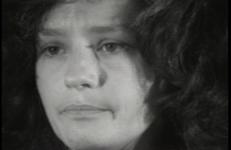
Martha Rosler (b.1943) received her BA from Brooklyn College in 1965 and her MFA from the University of California, San Diego in 1974. Rosler has produced seminal works in the fields of photography, performance, video, installation, criticism, and theory. Committed to an art that engages a public beyond the confines of the art world, Rosler investigates how socioeconomic realities and political ideologies dominate everyday life. Rosler's work has entered the canon of contemporary art through a process of steady, stealthy infiltration. Lacking commercial gallery representation until 1993, her endeavors as a prolific essayist, lecturer, and political agitator enabled her agenda to trickle down through critical channels.
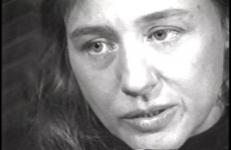
Painter, Susan Rothenberg (b.1945) is known for her poetic, atmospheric images. From her early horse paintings to her paintings of athletes and dancers, Rothenberg's works have always been subservient to the flatness and objectivity of her gesturally dense surfaces. In her paintings, image and surface combine in a private symbolism and restrained drama that is physically and emotionally intrusive. Rothenberg currently lives and works in New Mexico.
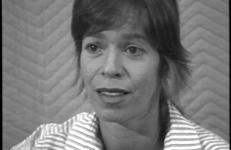
American painter, Robert Ryman (b. 1930) is associated wth the movements of monochrome painting, minimalism and conceptual art. The artist first moved to New York City from Nashville with the intention of becoming a jazz musician. In 1953 he took a temporary job—where he would ultimately work for seven years—as a guard at the Museum of Modern Art. Soon after, he would decide to devote his career towards painting. In his first paintings and collages from the mid-1950s, he experimented with material, color and brushwork, eventually reducing the painting to its barest elements.
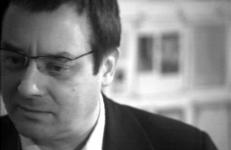
Canadian-born artist Miriam Schapiro (b.1923) was one of the great forces behind the feminist art movement in Los Angeles. Originally painting in an Abstract Expressionist manner, she developed a new, more personal style of assemblage she called “femmage” as she became more politically involved. She was also one of the first scholars to create a curriculum on Feminist Art at CalArts. Through the use of large scale media and symbols emblematic of the female, she has battled to pay homage to women and their undervalued domestic traditions.
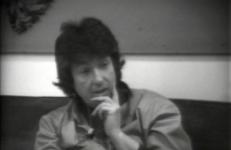
Peter Schjeldahl (b.1942) began writing his “poetical criticism” for Tom Hess at ArtNews in the mid 1960s. He has since written for both popular and specialized publications including The New York Times, Art in America, and The Village Voice, among others. In this interview from 1982, Schjeldahl discusses the critic’s relationship to the artist, the audience, artwork, and the professional community of art critics. He also reads some of his own poetry.Currently, Schjeldahl writes for The New Yorker and various art journals.
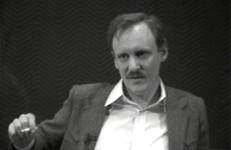
Joel Shapiro (b.1941) came to prominence in the early 1970s with his representational miniatures of everyday objects like chairs and houses. Since then he has become one of the most exhibited American sculptors. Shapiro’s vocabulary consists largely of rectangular volumes, with which he has created a body of work dancing on the line between abstraction and figuration. The human form has been a major theme in Shapiro’s geometric expression.
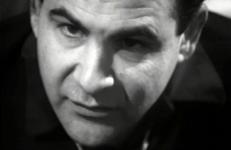
Hollis Sigler (1948–2001) was a Chicago-based artist. She received degrees from both Moore College of Art and the School of the Art Institute of Chicago. Her mature artistic style was faux-naïve, featuring paintings whose subjects, furniture and clothing set in doll-house type interiors and suburban landscapes, were stand-ins for the implicitly female figure. She was an openly lesbian artist and a prominent member of the faculty of Columbia College in Chicago.
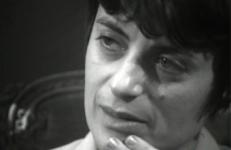
Charles Simonds (b.1945) majored in art at the University of California at Berkeley. There he discovered an area of clay pits that had once provided the raw material for some of Manhattan's older buildings. He literally immersed himself in the subject, burying himself in a pool of wet clay to get a feel for the material. Simonds's sculptures are enchanting architectural minatures. Most are landforms with small chambers and towers; some are abstract organic shapes. Carefully built brick by tiny brick, Simonds's sculptures engage the child in everyone.
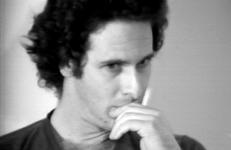
Best known for her drawings and prints, Nancy Spero (1926-2009) worked as an oil painter on both paper and canvas and with installations. As both artist and activist, Nancy Spero's career spanned fifty years. Spero was active in many radical groups including WAR (Women Artists and Revolution) and AIR (Artists in Residence), the first women’s cooperative gallery in New York. She was renowned for her continuous engagement with contemporary political, social, and cultur
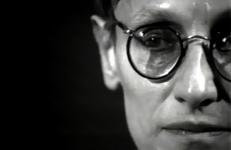
Pat Steir (b.1938) is an American painter and printmaker, whose work has resisted artworld currents and factions for decades while maintaining enthusiastic critical support.
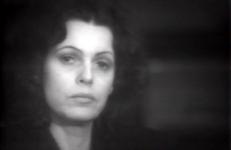
Pat Steir (b.1938) is an American painter and printmaker, whose work has resisted artworld currents and factions for decades while maintaining enthusiastic critical support. She graduated from Pratt in 1962 and in 1964 was included in the show Drawing at the Museum of Modern Art in New York and had her first solo exhibition at the Terry Dintenfass Gallery, New York. She first came to prominence in the 1970s, when her work concentrated on signs and symbols and was close to minimal and conceptual art.
